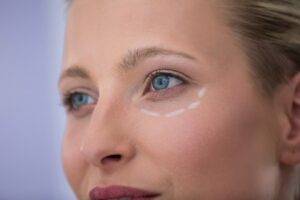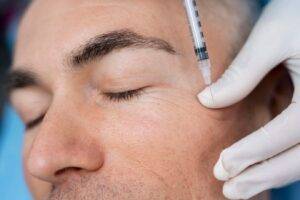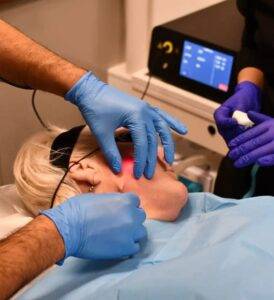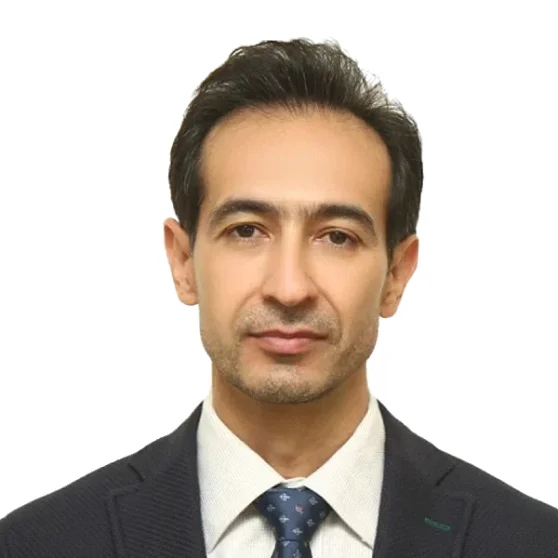Book an appointment
What is Otoplasty?
Otoplasty, also known as ear surgery, is a type of cosmetic procedure aimed at changing the shape, size, or position of the ears. This procedure is commonly performed to correct defects in the ear structure that are present from birth, to treat misshapen ears caused by injury, or to bring proportion and balance to the ears relative to the face. Common reasons for undergoing otoplasty include correcting overly large ears or ears that protrude significantly.
Otoplasty can be performed at various ages, including in children once the ears have reached near full size, typically around five to six years of age. The surgery can enhance both the function and appearance of the ears, contributing to an increase in self-esteem and personal comfort. The specific techniques used during otoplasty can vary, but they often involve reshaping the cartilage and skin of the ears to achieve the desired outcome.


Types of Otoplasty?
Otoplasty encompasses several different types of surgical procedures, each designed to address specific issues related to the ears. Here are the main types of otoplasty commonly performed:
- Ear Pinning (Traditional Otoplasty):
- Purpose: Primarily used to treat protruding ears by pinning them closer to the head.
- Procedure: Small incisions are made behind the ears to expose the ear cartilage, which is then sculpted and bent towards the head. Permanent stitches may be used to hold the cartilage in place.
- Ear Reduction (Reduction Otoplasty):
- Purpose: This type reduces the size of the ears, addressing issues like macrotia (abnormally large ears).
- Procedure: Excess skin and cartilage are removed to reduce the overall size of the ears, helping them better match the scale and proportions of the patient’s face.
- Ear Augmentation:
- Purpose: Performed on patients who feel their ears are too small (microtia) or those missing significant ear structures.
- Procedure: Cartilage from other parts of the body (often ribs) is grafted to create or augment the ear structure.
- Torn Earlobe Repair:
- Purpose: Repairs earlobes that have been stretched or split, often due to trauma or prolonged wear of heavy earrings.
- Procedure: The split or stretched area is freshened and then sutured together to allow natural healing, restoring the normal appearance of the earlobe.
- Stahl’s Ear Correction:
- Purpose: To correct an ear shape that includes an extra fold of cartilage (giving the ear a pointed shape, reminiscent of Spock’s ears from “Star Trek”).
- Procedure: The unwanted cartilage fold is reshaped or removed to produce a more typical ear shape.
- Cryptotia Correction:
- Purpose: Addresses the issue where the upper ear seems to be hidden under the side of the head.
- Procedure: The ear is freed from the side of the head and repositioned properly, sometimes requiring skin grafts or flaps to ensure proper placement and healing.
What are the indications of otoplasty surgery?
- Traumatic Ear Deformities: Injuries from accidents or trauma thaOtoplasty surgery is indicated for a variety of conditions related to the appearance and structure of the ears. Here are some common indications for considering otoplasty:
- Protruding Ears: One of the most common reasons for otoplasty is to correct ears that stick out significantly from the head. This condition can be a cosmetic concern for many people and can be addressed by pinning the ears closer to the head.
- Large Ears: Otoplasty can reduce the size of ears that are disproportionately large compared to other facial features, helping to balance the overall facial aesthetics.
- Asymmetrical Ears: When one ear is noticeably different in size or shape from the other, otoplasty can be used to make the ears more symmetrical.
- Congenital Defects: Some individuals may be born with ear deformities such as microtia (an underdeveloped outer ear) or anotia (the absence of the ear). Otoplasty and other reconstructive procedures can be used to create or reshape the ear.
- Cupped Ear: A very small ear, sometimes called “cup ear,” which can look shrunken or cup-like, can be reshaped to a more natural appearance through otoplasty.
- Lop Ear: This condition involves a tip that folds down and forward, which can be corrected by reshaping the cartilage.
- Shell Ear: A condition where certain features like the natural folds and creases of the ear are missing.
- t have altered the shape or structure of the ears can also be corrected through reconstructive otoplasty.
- Aesthetic Improvement: Individuals seeking improvement in their appearance for personal or psychological reasons may also opt for otoplasty, even if their ears are considered normal.
What are the benefits of Otoplasty?
Otoplasty, or cosmetic ear surgery, offers several benefits that go beyond mere aesthetic improvements. Here are some of the key benefits associated with this procedure:
- Otoplasty can significantly enhance the shape, size, or position of the ears, leading to a more balanced and proportionate appearance.
- Unlike some other cosmetic procedures that may require repeated treatments, the results of otoplasty are permanent. Minimal Scarring: Otoplasty techniques often involve incisions that are made behind the ear, where any potential scarring is less visible. Even when incisions need to be made on the front, they are usually within the natural creases of the ear.
- The recovery period for otoplasty is usually quite short. Wide Age Range: Otoplasty can be performed on patients as young as 5 or 6 years old, once the ears have reached full size, through to adulthood. This flexibility allows individuals of all ages to benefit from the procedure.
- The procedure can be tailored to meet the specific needs and desires of each individual.
- While all surgical procedures carry some risk, otoplasty is generally considered safe with a low risk of serious complications.
Why Choose Newsense Clinic for Your Otoplasty Treatment in Dubai?
At Newsense Clinic, we understand the importance of precise and aesthetically pleasing results in Otoplasty. Our team of highly experienced surgeons is dedicated to providing exceptional care from the initial consultation through to post-operative follow-ups. We utilize the latest techniques and technology to ensure safe, effective outcomes. Our personalized approach ensures that each patient’s unique needs and aesthetic goals are met, making Newsense Clinic the premier destination for Otoplasty treatment in Dubai.
Ready to transform your appearance and boost your confidence with Otoplasty? Contact Newsense Clinic today to schedule your consultation. Our expert team is here to guide you every step of the way towards achieving the look you’ve always wanted. Call us to book your appointment and take the first step towards a new you!













